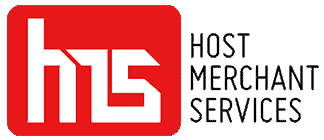Your checking account number is the number that identifies you at the bank. You’ll need it to set up direct deposit, automatic bill pay or to pay bills manually. Fortunately, it’s easy to find whether you have your checkbook handy or log into your account online.
What is a Checking Account Number?
Your checking account number identifies your bank account at the bank. It’s not enough to say you have an account there, you must provide the individual account number which is usually 10 to 12 numbers long. Think of it like your Social Security number. It identifies you among millions of other Americans, just like your account number identifies your account among others.
X Places to Find your Checking Account Number
It’s easy enough to find your checking account number as it’s available in four places.
Paper Checks
Your paper checks are the easiest place to find your checking account number. You’ll find it at the bottom of the check, near the middle. It’s the second set of numbers. You’ll see the space in between the two sets of numbers to differentiate.
Bank Statement
Whether you get your bank statements online or in the mail, your account number usually appears in the upper right corner. It’s important to keep these documents secure since they do contain your full account number, though.
Bank Account Dashboard
If you use online banking, you can usually access your checking account number there. Most banks have two-factor authentication before providing the full account number, though. Each bank shows the numbers differently, so you may have to play around with the menu options to find it.
The Physical Bank
If you have trouble getting your account number with any of the above methods, you can contact your local bank. Some banks may require you to come in, but others have a 1-800 number you can call and answer security questions to access your account number and information.
What is the Routing Number?
You’ll notice a set of numbers before your checking account number on your checks. That’s the routing number.
It identifies the bank where you hold your account, whether the bank system or individual bank location. Think of it like your street address for a checking account. You’ll need this number before you can conduct any ACH transactions, so it’s important to know how to find it.
How to Find the Routing Number
You can find your routing number in the same places as you find your checking account number.
Paper Checks
On your paper checks you’ll find the routing number to the left of the checking account number. It’s the first set of numbers and is 9 digits long. The space after the routing number indicates the next number is the account number.
Bank Account Dashboard
Most banks provide the routing number online and it’s easy to find. It’s not secure information because no one can access your individual account with just the routing number. Many people need a bank’s routing number, especially when wiring money to the bank.
The Physical Bank
You can contact a bank or visit them and get the routing number fairly easily. You don’t have to provide identification again, because you aren’t asking for private information about a specific account.
What is a Check Number and When do you Need It?
The final numbers you’ll see on the bottom of your check is the check number. These don’t have any significance to anyone except you. They are purely for record-keeping and so you don’t bounce any checks.
You should use your check numbers to log the checks you’ve written and track when they clear. You may also need your check number when you’re paying a bill online, some creditors ask for a check number and some don’t.
How to Protect your Checking Account Number
It’s important that you understand how to protect your checking account number since it provides direct access to your checking account and funds.
Don’t Write Them Down
Writing your checking account number down in a ‘safe place’ is like an invitation for someone to snatch it and use it. Instead, commit it to memory if possible or know where you can find it when needed. If you must write it down, keep it in a locked safe.
Be Careful about who you Share your Checking Account Number With
Your checking account number should be as private as your Social Security number. Before you share it, make sure the entity you’re sharing it with is legit. Even if it’s someone you’ve paid a bill with before, make sure you’re typing in the link yourself and not following a link from an email or text – it could be a phishing scam.
Shred Voided Checks and Old Bank Statements
Any documentation you receive with your account number on it, shred as soon as you are done with it. If you must keep your account statements for recordkeeping, keep them in a safe place, preferably a locked safe.
Final Thoughts
Your checking account number is an important piece of information. You should know where to find it and how to protect it. When you need it, you should be able to access it easily, even if you don’t have it committed to memory.
Before you share it, though, make sure it’s with a trustworthy source. Most people don’t need your account number, especially if you have a debit or credit card tied to the account. You can pay using your card which may provide more security than just handing out your routing number and account number to take care of your bills.
